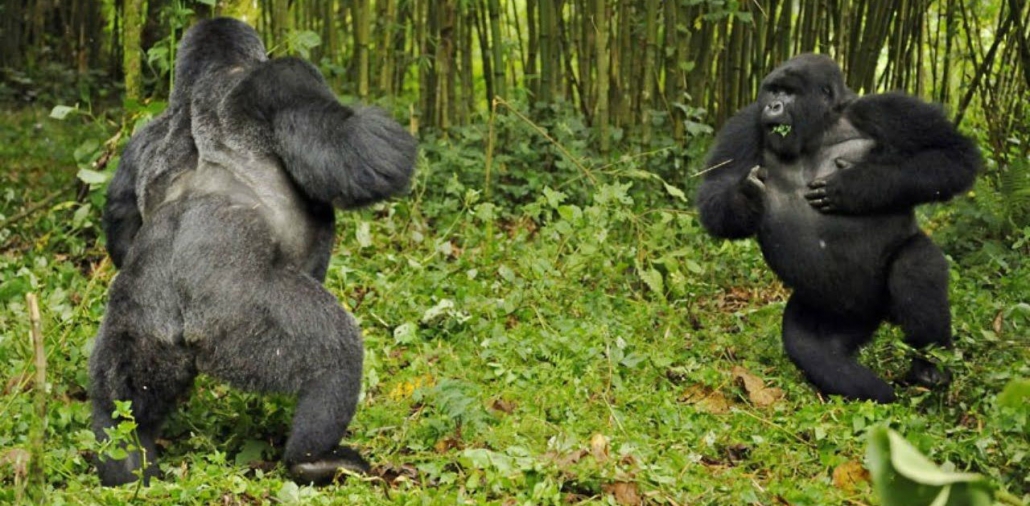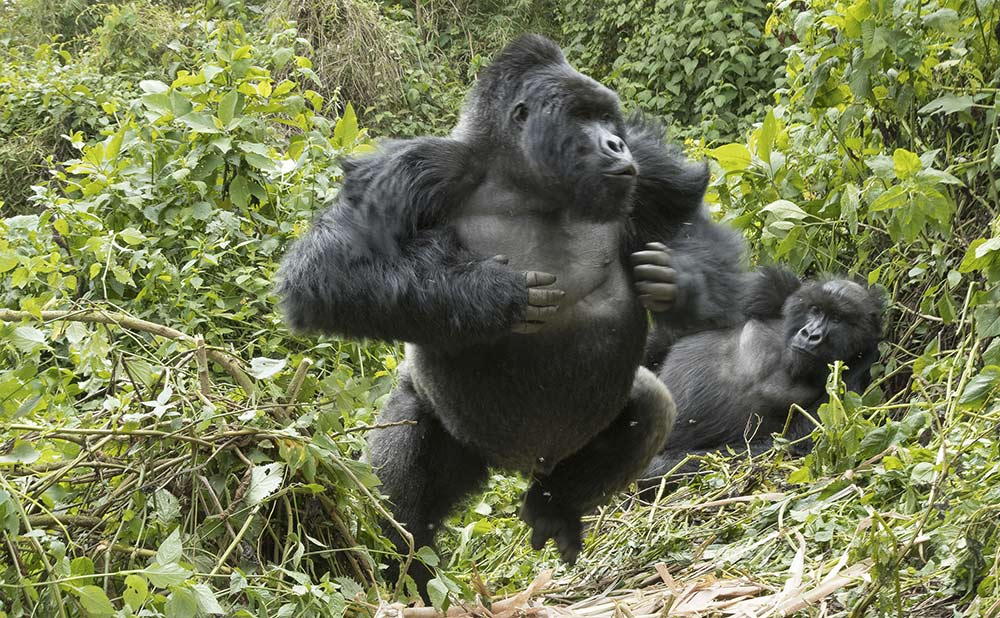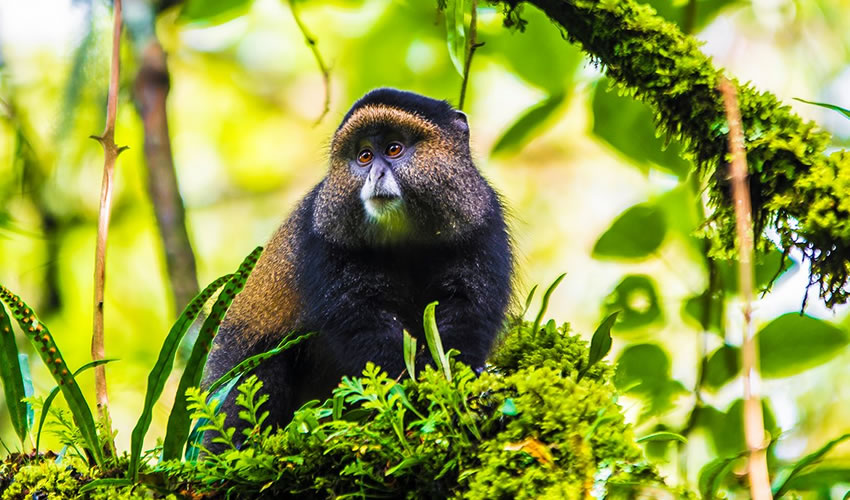
What to do if a mountain gorilla charges at you?
What to do if a mountain gorilla charges at you?
What to do if a mountain gorilla charges at you? : Mountain gorillas are herbivores that inhabit highportions of Africa’s tropical forests. Female gorillas, young gorillas, and infants make up the bulk of a group of 2 to 30 mountain gorillas, which is typically led or dominated by a male gorilla, sometimes known as a silverback. The silverback decides when and where the family eats, and he will also defend and protect his family if they feel threatened by other gorillas or by people.
Gorilla trekking safaris in Africa entails moving through the forest with a park guide or ranger in search of the critically endangered mountain gorillas in their natural environment, and then spending one hour with the gorillas once they are located.
When gorillas are angry or feel threatened, they may make a variety of noises, including grunts, hoots, and cries, standing on two hind legs, and pounding its chest, which visitors on a gorilla safari may hear. If the danger continues, the silverback will seize whatever is available and destroy it to protect his family.
Mountain gorillas charge for a variety of reasons, including but not limited to: loud noises from visitors, sudden movements while in their presence, direct contact with the gorillas, and others that pose a threat to the family, and thus end up charging to protect the families from strangers, poachers, charge or fight to win females, and charge in case they want to break off from the family; any gorilla family can have no more than two male gorillas, so they fight for leadership.

What to do if a gorilla Charges?
Mountain gorillas are powerful and the silverbacks can do everything to safeguard themselves and their families in case of an attack. If a gorilla suddenly charges, tourists should
Crouch down.
In the event that a gorilla charges you during gorilla trekking safari, it is best to remain cool, peaceful, respectful, and unthreatening by stooping down until you are lower to the ground than the cutlery. The silverback will see from this that you are not a threat and hence will not initiate combat with you.
Walk away steadily.
Do not try to outrun a charging gorilla; doing so would just encourage the ape to chase after and attack you. Instead, retreat slowly away from the animal while making no sudden movements, and then leave the area. You can also show your defeat by lying on the ground or acting uninterested by doing things like relaxing or staring at the woods.
Follow your guide what he /she tells you.
Visitors are given a rundown of the dos and don’ts of interacting with wild gorillas before setting off on their jungle excursion for gorilla trekking safari. When visiting a national park to do gorilla trekking, tourists are always accompanied by an armed park ranger who briefs them on proper behavior around the gorilla family. Visitors are briefed on what to do if a gorilla family turns hostile, as park rangers are well-versed in the ebb and flow of the gorillas’ emotions and personalities.
Never look directly into the Gorilla eyes.
Gorillas are timid primates, therefore after they have charged, visitors shouldn’t gaze straight into their eyes lest the gorilla take the challenge as an invitation to attack. Therefore, guests should not make eye contact with the hosts, but rather act disinterested and go to work.
Show your teeth and shout back.
If you find yourself face-to-face with a charging gorilla and have no room to retreat, baring your fangs and yelling back at it may be your only option. You’ll be told to make a lot of noise and thump your chest like a charged gorilla to demonstrate your wildness and scare the animal away.
Pretend to be an ape.
If you’ve exhausted all other methods and a charged gorilla still poses a threat, try acting like a normal ape in the wild and approaching it, picking leaves, breaking and chewing vegetation, and napping on the ground to reassure the gorilla that you’re not a threat.
Keep Distance.
Travellers visiting gorilla families in the jungle should keep a safe distance of 7 metres from the animals at all times and avoid touching them unless they initiate contact first. Gorillas are dangerously territorial, so approaching them too closely could provoke them to charge, causing them to injure or even kill you as they attempt to protect their young and territory.
When all the rules and regulations for gorilla trekking safari are followed, including not using flash cameras, not raising one’s arms in the presence of a charged gorilla, maintaining a low tone in the jungle, and maintaining a distance of seven metres when near gorilla families, there are very few cases of gorillas attacking visitors. By taking these precautions, you can enjoy a safe and memorable gorilla trekking safari experience in Africa without drawing the gorillas’ unwanted attention.
You won’t find anything quite like the spectacular, interesting, and exciting safari experiences you’ll have on a mountain gorilla trekking tour in Bwindi, Mgahinga, Volcanoes, or Virunga national parks.
What should if do if a Gorilla charges? If you do as I’ve said, you won’t get hurt and you will experience a perfect gorilla trekking safari







